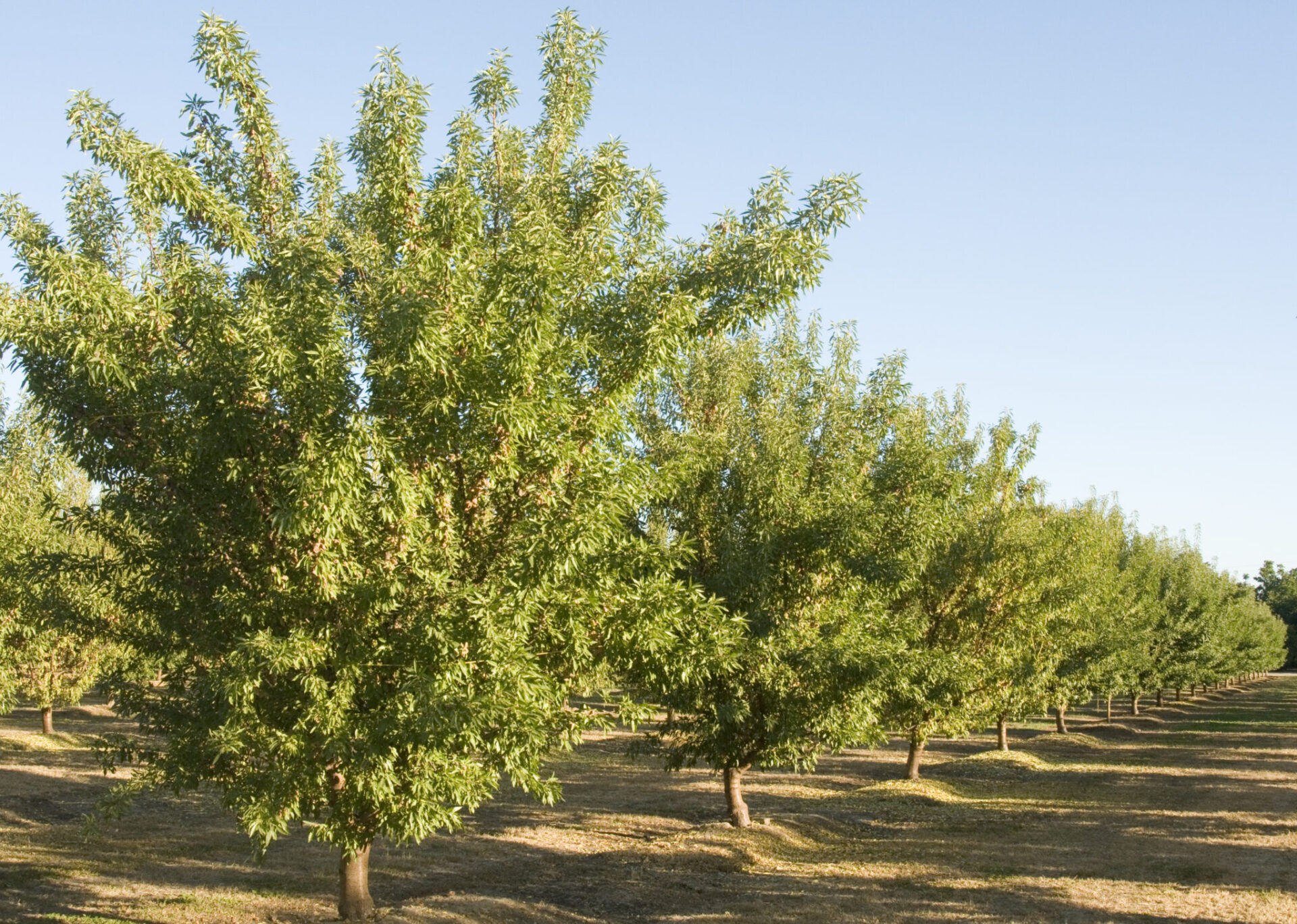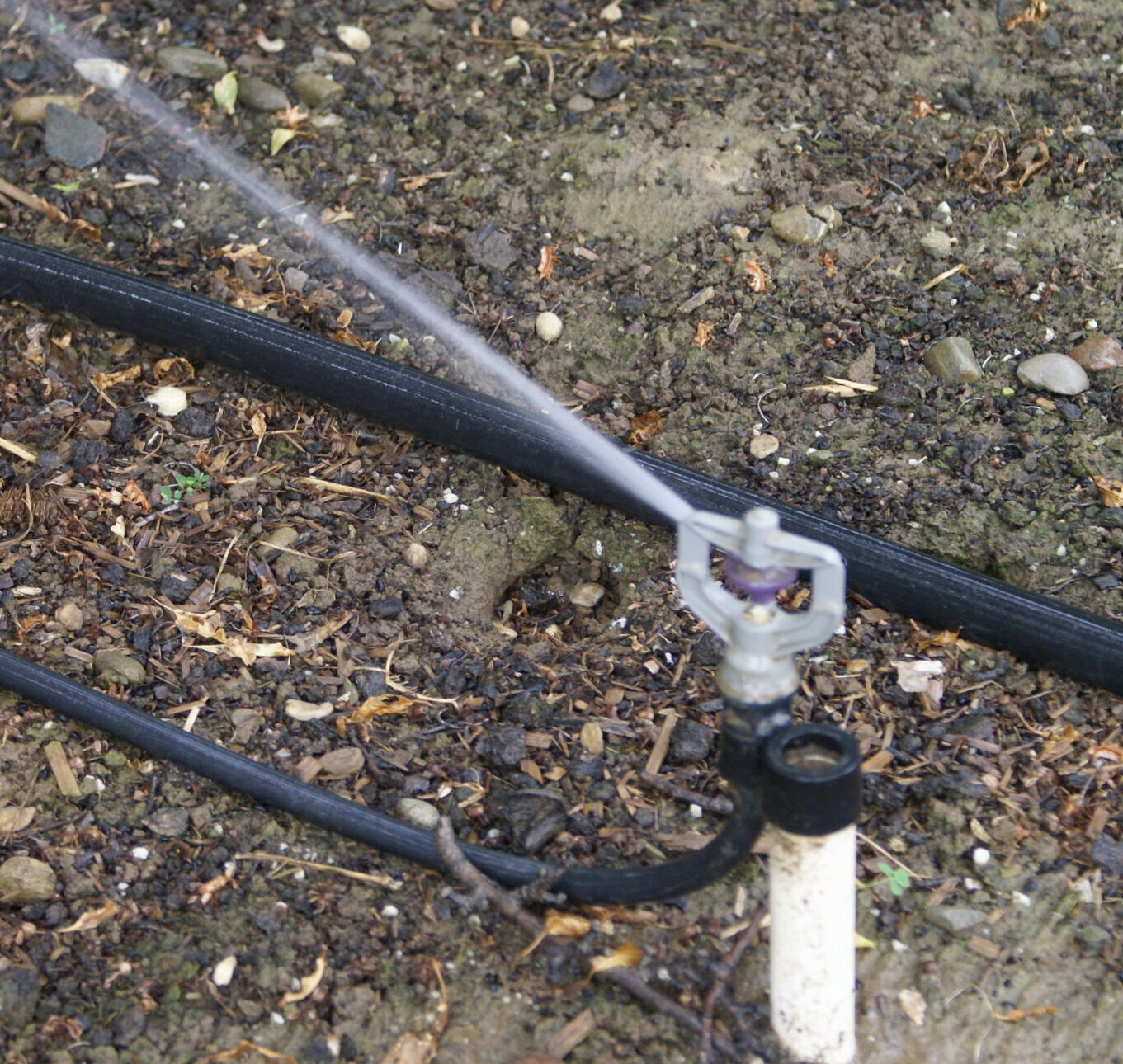
Warmer and longer days this month means orchard activity is picking up. Nut crops are developing and trees are growing. Water use by trees is increasing and tree roots are actively seeking nutrients. Insect pests and beneficial insects are reproducing. With all of these activities in mind, when you walk out into your orchard, what are five things you want to find?
1. A Functional Irrigation System Ready to be Put to Use
Early maintenance of your irrigation system, before it will be put to use, provides confidence in uniform distribution and efficient use of water. No one wants to deal with leaks, plugs and pressure problems when trees need water.
Maintenance starts at the irrigation pump. Clean filters and backwash to remove organic or particulate matter. Check the sand media filter to be sure sand is not caking. Drip and micro systems should be inspected for leaks and plugs. Flush lines, beginning with mainlines.
Leaks in drip and micro systems should be repaired. Nozzles and drip emitters should be checked for clogs. Running emitters at pressure ranges listed will determine if pressure is uniform.
Make sure monitoring tools − pressure chambers and soil moisture sensor equipment − are ready for use.
UCCE’s Sac Valley Orchards can provide specific operations to ensure the system is operating properly when you need to turn on the pumps (sacvalleyorchards.com/almonds/irrigation/irrigation-system-maintenance).
2. Healthy Trees
Leaf size is an indication of tree health, said CCA Rich Kreps. Trees bearing a full canopy of good-sized leaves in the spring have the potential to deliver a healthy crop of nuts. Those ‘solar panels’, Kreps said, will show the trees received adequate nutrition prior to and after harvest. Tree health is achieved by meeting crop demand and not over applying nitrogen.
Soil and tissue analysis done last summer or fall would show a lack of or overabundance of critical crop nutrients. The tests are commonly done in April and July, Kreps said, and allow for replenishment of depleted nutrients. He said September analysis after harvest could be helpful in allowing growers to make adjustments in nutrition late in the season or early in the spring. There is a fine balance to be made with nitrogen applications, he stressed. Growers who apply most of their annual N budget at once and too early in the season risk blowing the buds off the trees. Instead of growing a crop, the tree will push more vegetative growth. Smaller applications over time will not only ensure tree health over the growing season, but it will direct healthy crop development.
Another nutrient that plays a part in tree health and is often deficient in orchards is phosphorous. Kreps said this important nutrient might be difficult to get into the tree when temperatures are cold and should be applied in the form of orthophosphate that can be taken up by the tree.
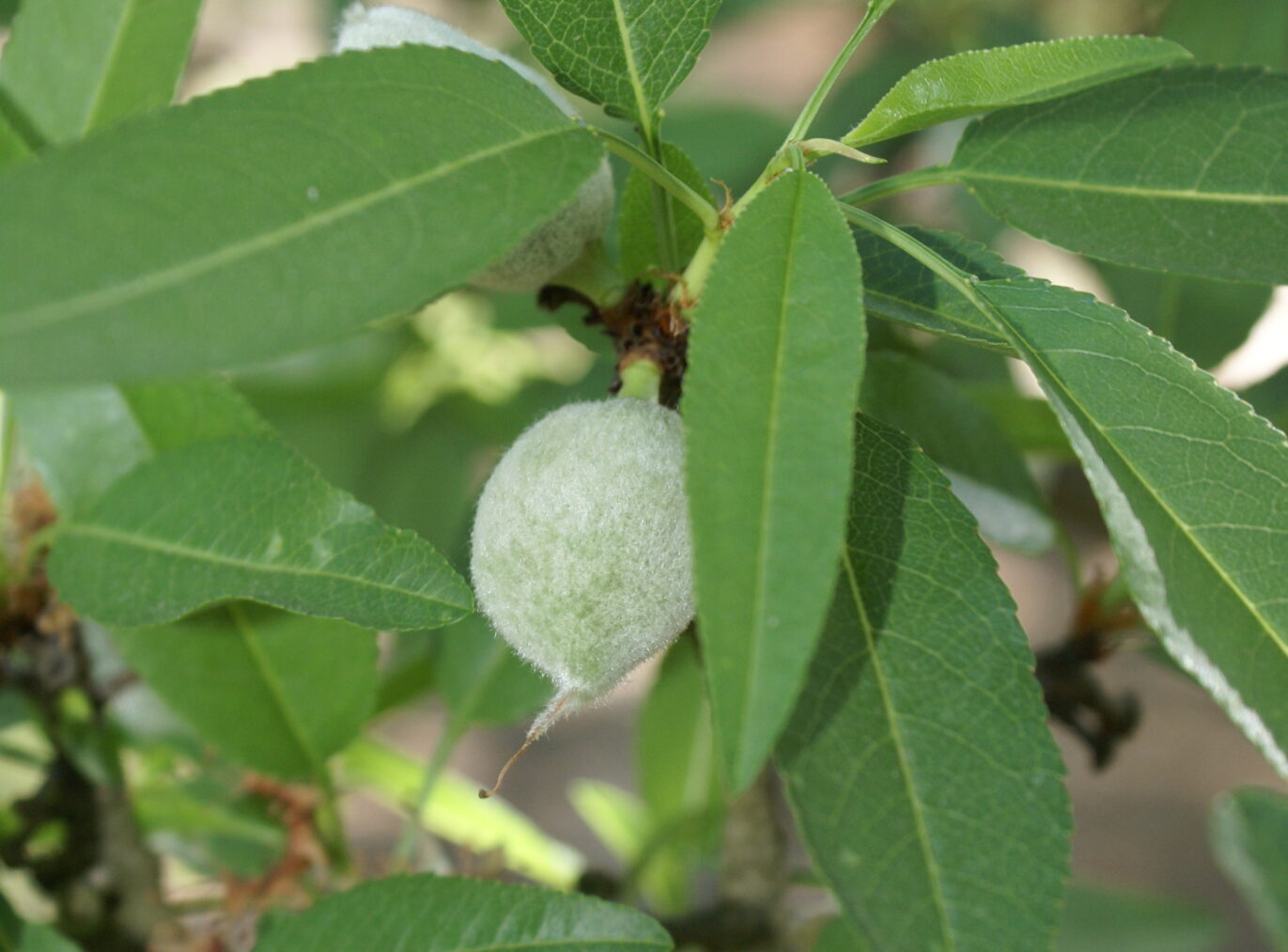
3. Beneficial insects
Finding beneficial or ‘predator’ insects in an almond orchard can help with control of spider mites and may allow for reduced pesticide use in the orchard.
The most common natural enemies that can be found in the spring in almond orchards are sixspotted thrips and destroyer beetles that prey on spider mites.
“Don’t kill them,” stressed David Haviland, entomology and pest management farm advisor in Kern County. Predator populations can be preserved by avoiding applications of broad-spectrum insecticides early in the season.
The only way to know if these beneficials are present in the orchard is monitoring with the use of sticky yellow predator traps. Sixspotted thrips is a reliable mite predator and feeds on mites in both the nymph and adult stages.
If they are present in the orchard and monitoring shows they are keeping spider mite populations below the economic threshold, Haviland advises forgoing a timed insecticide application in May to preserve the beneficials and maximize biological control.
Broad-spectrum insecticides, including pyrethroids and spinosads, will kill off the beneficials along with the spider mites.
Predators will typically control webspinning mites if presence-absence sampling indicates equivalent numbers of leaves with predators and with webspinning mites.
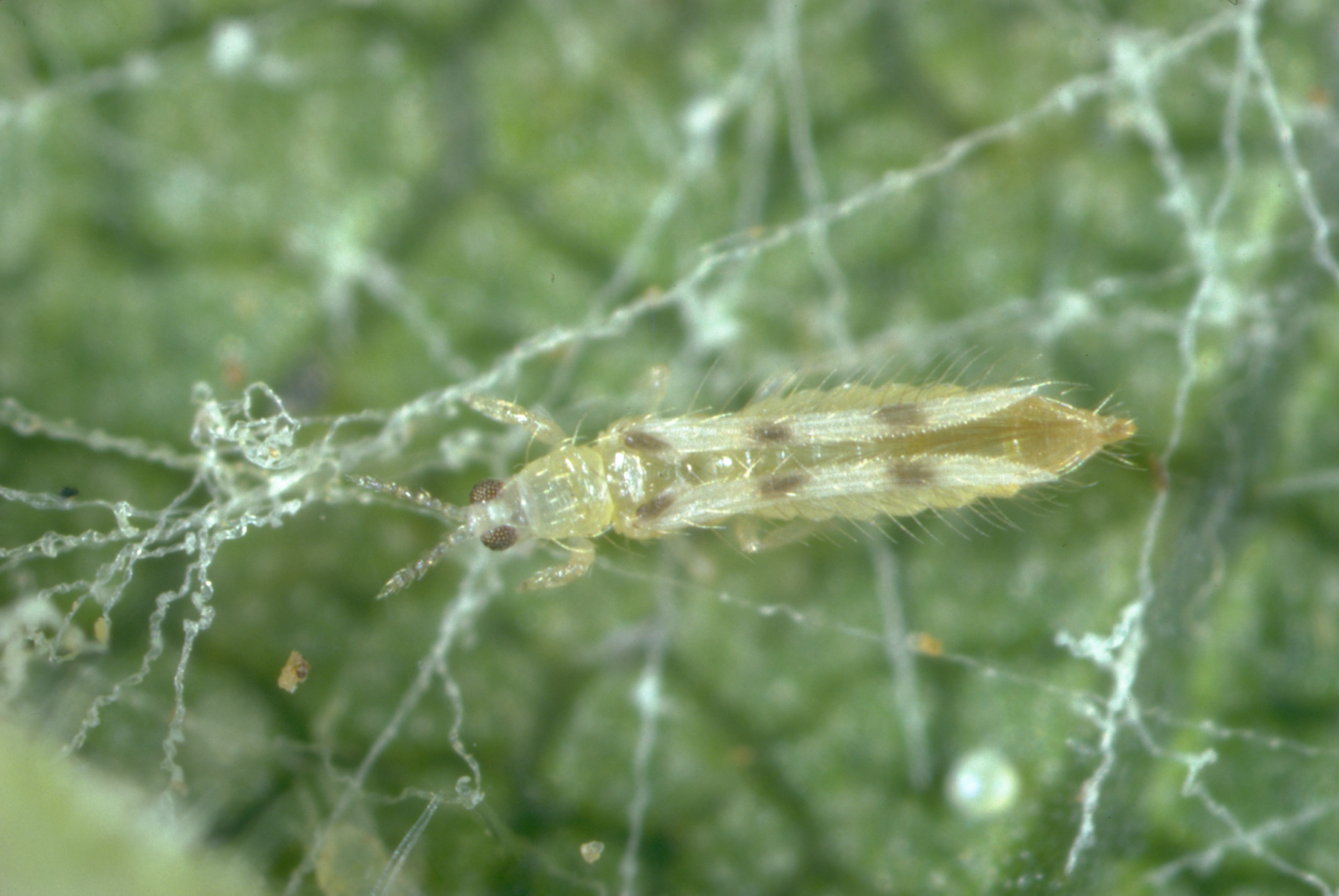
4. Full Nut Set
A full net set in an almond orchard is achieved because of excellent bloom and pollination weather along with strong hives. Weather is beyond a grower’s control, but as long as pollinators are active for at least two to three days during bloom, good nut set can be achieved.
Fresno-area almond grower Ryan Indart said bees need at least two full days during full bloom to pollinate the primary varieties and pollinator varieties.
Matching bloom, weather and bees can result in a 3,000 pound crop, Indart said, which is what growers need to make money in this lower price almond environment.
The Almond Board of California’s best management practices for pollination point out the importance of avoiding insecticide applications during bloom. Fungicide applications may be safely applied in late afternoon or evening when bees and pollen are not present.
Communication between grower and beekeeper before, during and after bloom can foster a good understanding about expectations during this critical time in almond production.
Hives should be inspected as they arrive in the orchard to determine if the terms stated in the grower/beekeeper agreement are being met.
Colony strength evaluations not only help ensure growers get what they pay for, they also help ensure that beekeepers are compensated for additional expenses in providing quality hives.
Growers can further monitor colony strength by walking orchards daily during bee flight hours to observe activity levels. In addition, growers should record hives that appear weak (i.e. relatively few bees coming and going at the hive entrance) or inactive, and then report those hives to the beekeeper.
ABC has a complete list of best management practices for bees at almonds.com/almond-industry/orchard-management/pollination.
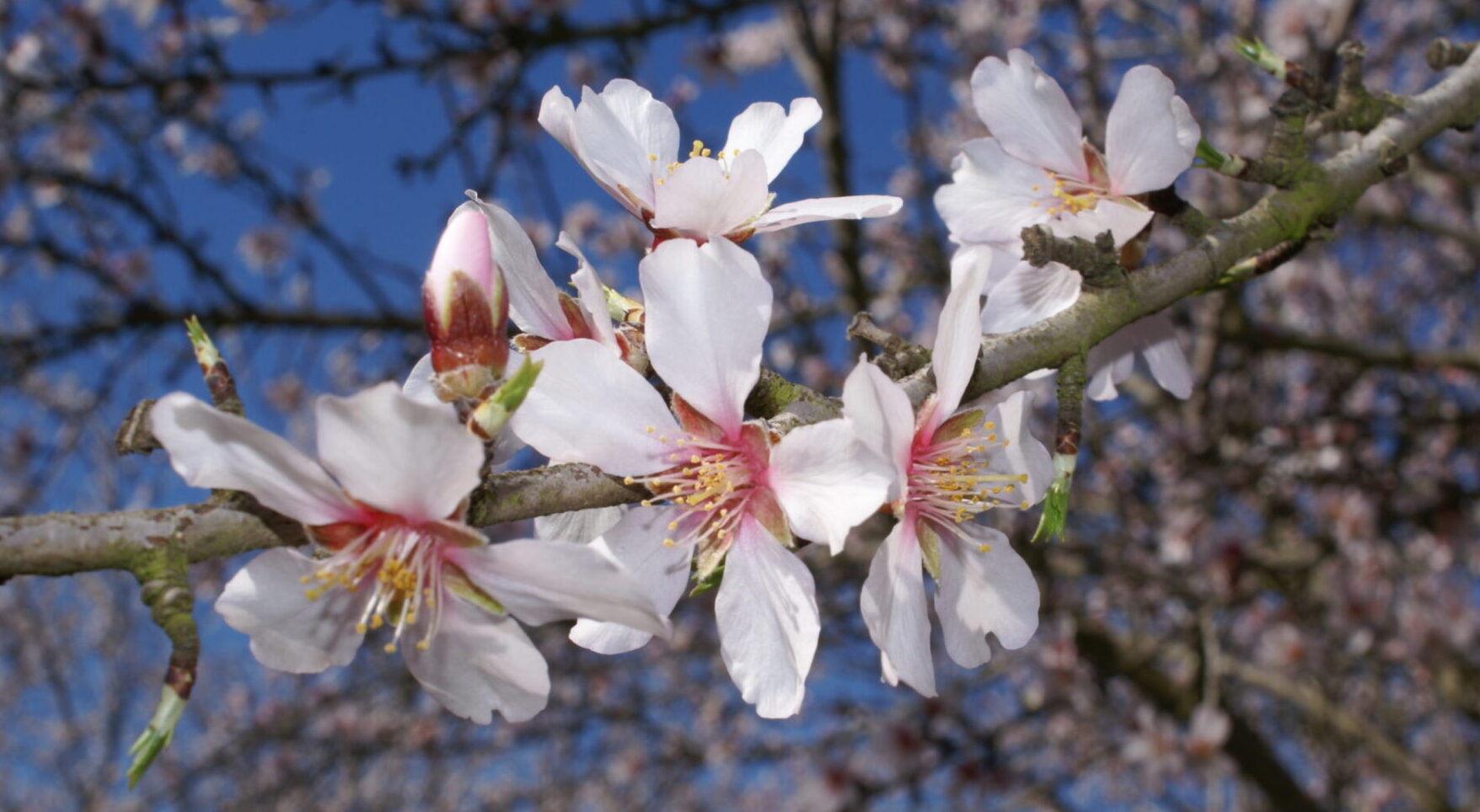
5. Optimal Soil Moisture
Almond tree roots are actively seeking moisture to sustain the trees as they leaf out and nuts develop. Growers need to verify that their trees are in a zone of adequate moisture to meet water needs, said Tom Devol, Almond Board of California’s Senior Manager of Field Outreach and Education.
“You have to go physically check, dig in the dirt,” Devol stressed.
The UC Drought Management website notes that almond water use begins when the leaves develop and shoot growth begins. By April, longer days, higher temperatures and lower humidity result in higher water use. Using the weekly ET values, growers can determine if rainfall is meeting water needs or if irrigation should begin to fill the gap.
Sources of water available to trees include: soil-stored moisture, in-season rainfall absorbed by the soil and applied irrigation water. These all combine to determine the total seasonal water available to the orchard.
Mature, conventionally spaced almond trees in the southern Sacramento Valley can use about 41 to 44 inches of water in an average year of unrestricted water use. High-density orchards, long pruned orchards or those with a cover crop can have even higher use.
Soil moisture monitoring demonstrations in more than 40 almond orchards in Kern County indicate that seasonal water use in the southern San Joaquin Valley may be as high as 50 to 54 inches.
A USDA guide to estimating soil moisture by look and feel can be found at nrcs.usda.gov/Internet/FSE_DOCUMENTS/nrcs144p2_051845.pdf.
